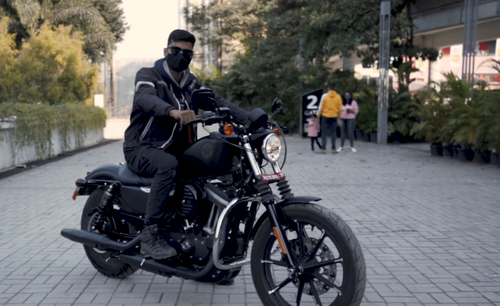Bajaj Auto, India’s second-largest two-wheeler producer, reported a significant 20% year-on-year jump in its September quarter (Q2) standalone net profit to ₹1,836.14 crore, surpassing expectations. Surprisingly, this growth didn’t emanate from their two-wheeler sales, which declined 13.5% in in volume terms to 881,583 units, but from the legacy three-wheeler auto rickshaws, a segment Bajaj commands with a 60% market share.
Sales of these high margin vehicles–both the passenger and goods transport versions, used for last-mile logistics–have been surging in India. According to Society of Indian Automobile Manufacturers (SIAM), three-wheeler production, which was clucking numbers in excess of 1 million between 2017-18 and 2019-20, slumped to 614,613 units during the pandemic-hit 2020-21 but rebounded strongly to 855,696 units in FY23.
According to SIAM, domestic three-wheeler sales, usually less than the numbers produced to account for pipeline stocking, stood at 339,690 units during April-September. With the October-March period accounting for the chunk of sales , given festivals and fiscal year closing, last year’s numbers look set to be surpassed.
Add electric three-wheelers to this and the picture gets even better. Electric three-wheelers sales surged a massive 118.25% to 404,143 units in FY23 from 185,173 units sold a year ago. More than half of India’s three-wheeler registrations in 2022 were of the electric variety, according to an IEA April report.
Yet, underlying this success is a stark reality: the inadequacy of India’s public transport system. The burgeoning demand for auto-rickshaws and similar intermediate public transport is symptomatic of the lack of robust, accessible mass public transport in India’s explosively growing but chaotically run cities.
Auto-rickshaws and their four-wheeled cousins fall under the category of intermediate public transport or para transit. And surging three-wheeler sales are testimony to the increasing load being lifted by these so-called para-transit options in plugging the demand-supply gap in shared mobility.
India’s urban planners and civic administrators have historically ignored public transport. Despite daily usage by 70 million passengers, compared to the railways ferrying 24 million, India’s public buses are sparse in number, totalling 3 lakh, and constituting only a minor fraction of the nation’s vast 326 million vehicle population. According to a study by the International Association of Public Transport, just 65 cities out of more than 450, with a population of over 1 lakh, have a structured public transport. A majority, therefore, relies on para-transit options. Only three metros – Kolkata, Mumbai and Chennai – have a large suburban rail network.
Among large cities , those with a population of over 3 million, the average share of public transport is 30% or less, with only Kolkata an outlier with around 50% share. In all these cities , the share of para-transit – autos, e-rickshas and shared three-four-wheel rickshaws – ranges between 10% and 12%, according to a report on para transit in Asia by Agence Française de Dévelopement (AFD).
Transport minister Nitin Gadkari, in a speech, emphasized the wide gap in public transport infrastructure, contrasting China’s 6 buses per 1,000 people to India’s mere 0.4. The nation would require 3 million additional buses to cater to the rising demand. Yet, the focus has been on high-profile metro rail projects, and light rail projects like monorails. India has 16 operational metros, with a further 16 in the works. The Union Budget has allocated over ₹20,000 crore for metro rail endeavors this fiscal, with state and city administrations expected to pitch in an equal amount.
In fact, India’s National Transport Policy notes that “Para transit would not normally be used for regular commute trips to work or school. However, when the quality of public transport deteriorates, para-transit tends to substitute for public transport. Unfortunately, this has started happening in many Indian cities. As such, this policy would seek to restore para-transit to its normal role by persuading the improvement of public transport.”
Unfortunately, these intentions have not been matched with effort or outcomes. So three-wheelers – and their manufacturers – continue to have a field day, while millions of ordinary commuters have to bank on these overcrowded and unsafe – but affordable – public transport options.
India’s festival season has begun. Durga Puja and Navratri celebrations are underway and Diwali is around the corner. This is also the time when most Indian businesses, small and around, baskets of goodies to their valued clients and stakeholders as a thank you for a good year. Bajaj Auto’s leadership might consider adding city administrators and urban transport planners to their distribution list for inadvertently bolstering their three-wheeler market.















